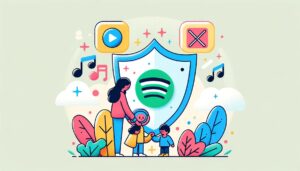Key Takeaways
| Key Point | Explanation |
|---|---|
| Dopamine Effect | Notifications trigger a dopamine release, incentivizing teens to keep checking social media. |
| FOMO | Fear of missing out drives teens to stay constantly updated on social events. |
| Social Validation | Likes and comments are perceived as measures of social standing and self-worth. |
| Platform Design | Social media features are deliberately engaging, encouraging frequent check-ins. |
| Online Presence | Teens feel the need to maintain an active social media presence. |
It’s no secret that teenagers are glued to their social media profiles, with some checking in more than 100 times a day. This staggering statistic is not just a mere habit; it’s a complex interplay of psychological triggers, social pressures, and the intricately designed digital environments that vie for their attention.
The Dopamine Effect
Each ping, like, or follow sends a pulse of dopamine through a teen’s brain, akin to the buzz from a sugar rush. This pleasure response to notifications is a powerful motivator, compelling them to return for more, thus creating an addictive loop of social media checking.
The Fear of Missing Out (FOMO)
The relentless concern that peers are experiencing more exciting events without them, better known as FOMO, is a key driver for teens to constantly peruse their social feeds. It’s a psychological phenomenon that Safe Lagoon understands deeply, encouraging parents to foster open dialogues about this anxiety with their children.
Seeking Social Validation
A ‘like’, in the digital age, can feel like a validation of one’s social existence. Teens often equate their self-esteem with their online popularity, leading to compulsive checking of their profiles to measure up to their peers.
The Allure of Design
The user experience of social platforms is no accident—it’s crafted meticulously to captivate. Features such as infinite scrolling and personalized feeds are designed to keep teens engaged, often leading them to habitually check their profiles without a second thought.
The Online Persona
In the digital playground, being seen and heard is crucial. Teens curate their online personas to fit into their desired social circles, and this often requires them to be ever-present and reactive on their profiles, a behavior that Safe Lagoon’s screen time management feature can help parents moderate.
Finding the Balance
While the digital age has brought us closer, it’s vital for teens to strike a balance. Safe Lagoon is committed to aiding families in navigating this balance by providing tools for managing and understanding online behavior, without stifling the independence and growth that come with responsible social media use. To take the first step towards balanced digital wellbeing, download Safe Lagoon today.





